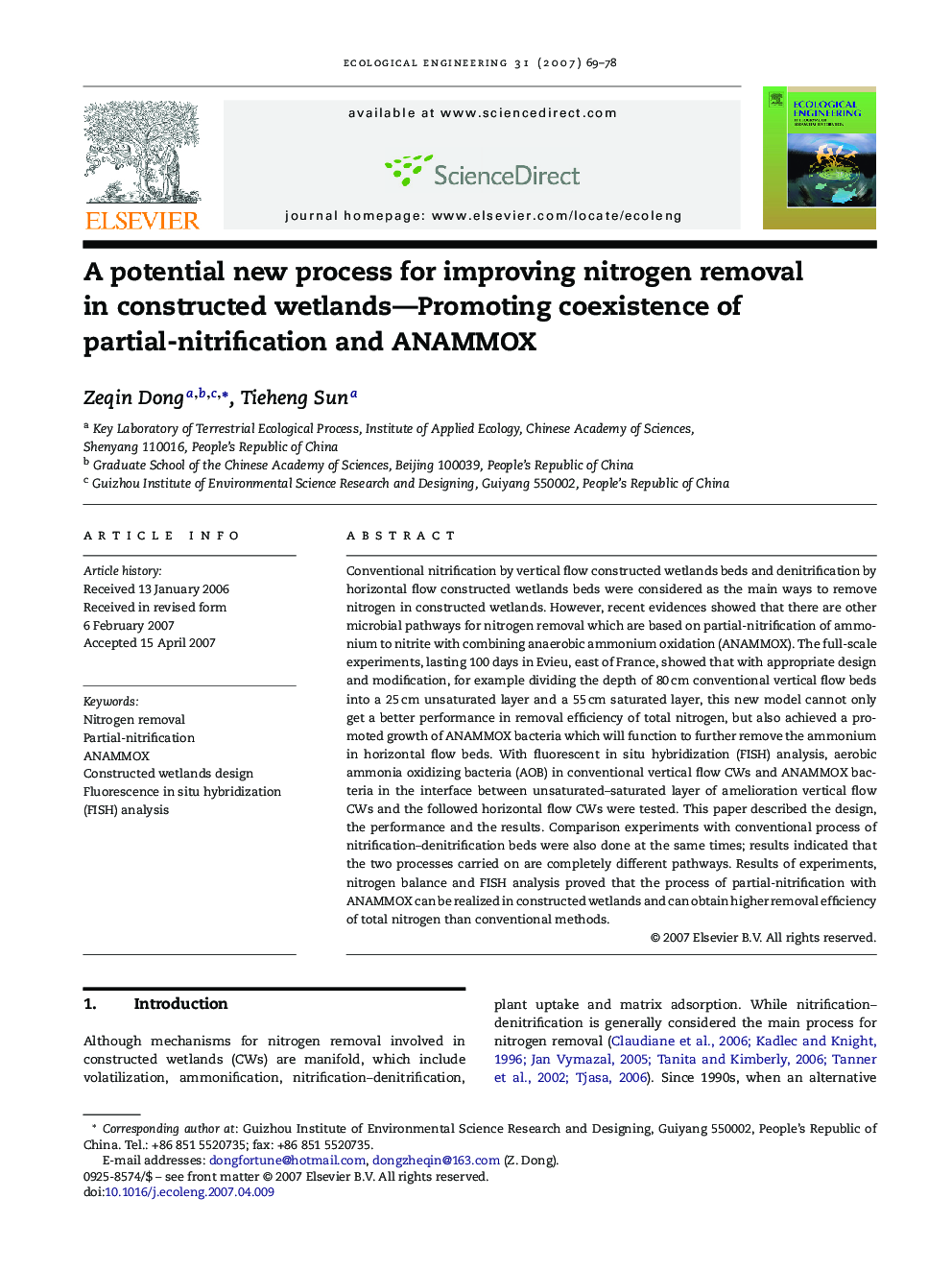| Article ID | Journal | Published Year | Pages | File Type |
|---|---|---|---|---|
| 4390801 | Ecological Engineering | 2007 | 10 Pages |
Conventional nitrification by vertical flow constructed wetlands beds and denitrification by horizontal flow constructed wetlands beds were considered as the main ways to remove nitrogen in constructed wetlands. However, recent evidences showed that there are other microbial pathways for nitrogen removal which are based on partial-nitrification of ammonium to nitrite with combining anaerobic ammonium oxidation (ANAMMOX). The full-scale experiments, lasting 100 days in Evieu, east of France, showed that with appropriate design and modification, for example dividing the depth of 80 cm conventional vertical flow beds into a 25 cm unsaturated layer and a 55 cm saturated layer, this new model cannot only get a better performance in removal efficiency of total nitrogen, but also achieved a promoted growth of ANAMMOX bacteria which will function to further remove the ammonium in horizontal flow beds. With fluorescent in situ hybridization (FISH) analysis, aerobic ammonia oxidizing bacteria (AOB) in conventional vertical flow CWs and ANAMMOX bacteria in the interface between unsaturated–saturated layer of amelioration vertical flow CWs and the followed horizontal flow CWs were tested. This paper described the design, the performance and the results. Comparison experiments with conventional process of nitrification–denitrification beds were also done at the same times; results indicated that the two processes carried on are completely different pathways. Results of experiments, nitrogen balance and FISH analysis proved that the process of partial-nitrification with ANAMMOX can be realized in constructed wetlands and can obtain higher removal efficiency of total nitrogen than conventional methods.
